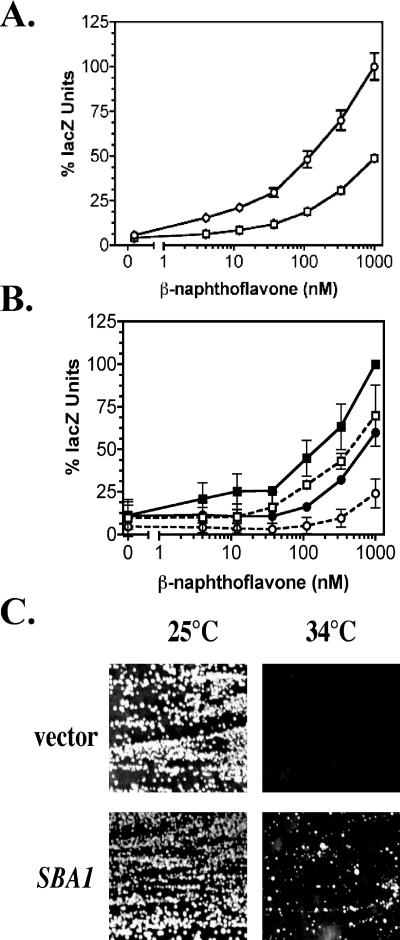Fig 7.
AhR signaling defects and temperature sensitivity in the hsp82G170D, sba1 double-mutant strain. (A) The parent strain (YMC1) (open circles) and the sba1 deletion strain (YMC2) (open squares) carrying the pLXRE5-Z reporter vector were assayed for AhR-mediated signaling in the presence of the indicated concentrations of β-naphthoflavone. The data were plotted as a percentage of the lacZ activity relative to that measured in the parent YMC1 strain at 1000 nM β-naphthoflavone. The lacZ activity in the YMC2 strain was significantly different (P < 0.05) from that of the parent strain at all ligand concentrations tested. (B) The YMC5/Hsp82 strain (squares) and the YMC5/G170D temperature-sensitive mutant strain (circles) were grown at 32°C and assayed for AhR-mediated signaling. Solid lines and symbols indicate strains that carry an SBA1 expression vector, and dashed lines with open symbols indicate sba1 null strains. All strains carry the pTXRE5-Z reporter plasmid and the AHR-GAL 1,10 promoter-ARNT expression construct integrated on chromosome III shown in Figure 1. The data were plotted as a percentage of the lacZ activity relative to that measured in the YMC5/Hsp82 strain at 1000 nM β-naphthoflavone. (C) The YMC5/G170D cells with the parent vector or SBA1 expression vector were grown on galactose-containing medium for 4 days at the indicated temperatures. AhR, aryl hydrocarbon receptor; ARNT, aryl hydrocarbon nuclear translocator

